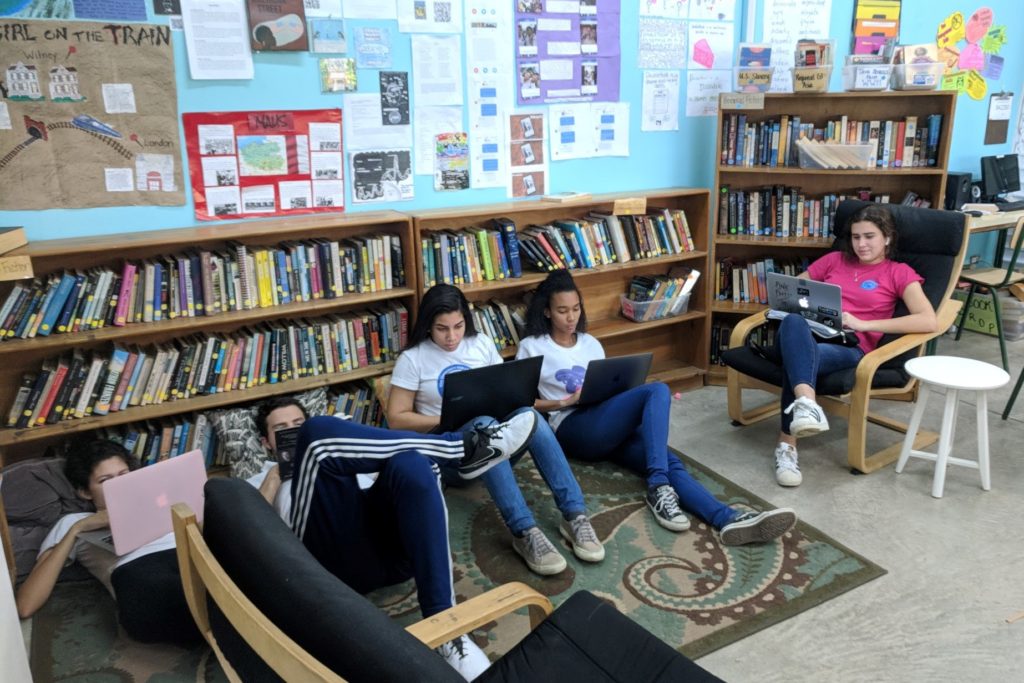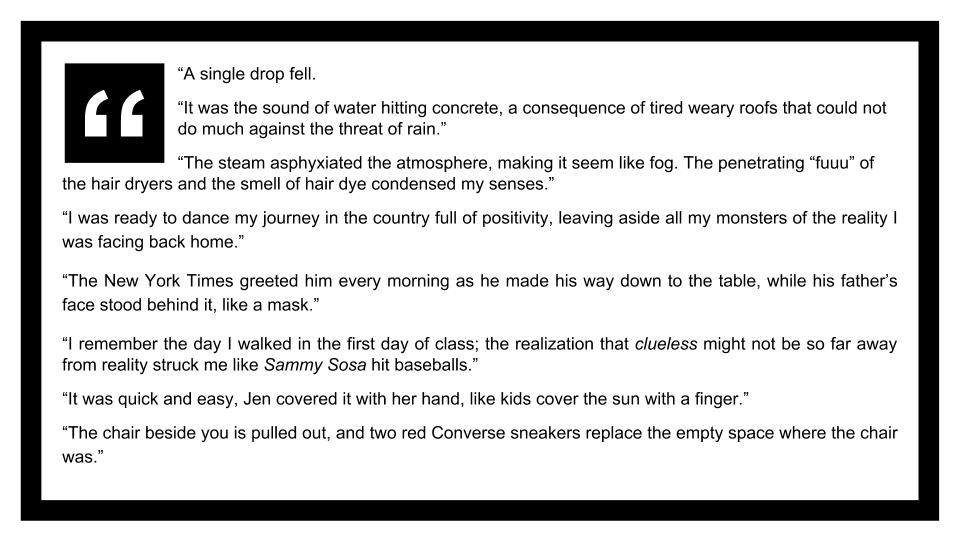Using Student Mentor Texts In Writing Workshop
For the past six weeks, in my Language Arts class, I’ve been experimenting with what I call “flipped feedback.” Rather than sitting at home assessing students’ drafts, I now meet with them for extended conferences and guide them as they assess their own work. This has had so many positive outcomes that I never intend to go back to my past methods of assessment.
However, when I started out with flipped feedback, there was one thing that was bothering me about it: in the past, when I confered with students during writing workshop, I would find examples of great writing to share with the class — a sentence here, a phrase there, even just the use of strong vocabulary. I’d say, “Hey, everyone. Can I share this with you? It’s so beautiful!” and read out the sentence. I liked doing this for two reasons: I wanted students to gain confidence in their writing, but more importantly, I wanted the class to hear student examples of great work, so that they’d see that it’s not only published authors who write well — they could look to their peers for mentor texts as well.
With flipped feedback, however, I was meeting for extended time with my students and the class was more differentiated (not everyone was working on writing — some were reading, some were completing other work) and it felt awkward to interrupt them to share good examples of writing. Knowing how important it is for them to hear each other’s work, I had to come up with a solution. Finally, I decided I could share their writing in the form of a mini-lesson.
I looked through all their drafts and found a writing gem from each student. I must admit that it was challenging to find a great example of writing every single student, but I made sure that no one was left out. I put these on Google slides and then shared them in a mini-lesson. One by one, I projected their sentences and asked students to analyze each one the same way we do when we’re “reading like a writer” and looking at author’s craft.
It was so much fun!
I didn’t include names, and some students didn’t say anything when their sentences were projected, but I could see them smile shyly. Others pumped their fists and said, “Hey! That’s mine. Woohoo, look at that!” as students applauded.
I would put up a sentence, read it out loud, and ask, “What do you notice here?” Students mentioned that their peers used imagery, metaphors, anaphora, and personification. They saw how certain words enhanced a sentence, how a simile that fit with the theme of the piece was stronger, and how just a few strong details made the scene come alive. Not only did they feel good about seeing their own writing being presented, but they were amazed by how much good writing goes on in the class.
After the lesson, when I sent them off for free choice work, almost all of them chose to work on their writing. When I asked them why, they said they felt inspired by the mentor texts and were motivated to polish their work. Many of them revised their writing with author’s craft in mind, using figurative language to enhance their pieces. Some of my students, who never take revision seriously, made powerful changes to their writing. What started out as a work-around (how do I share slivers of excellent work in this new workshop format?) turned into a powerful teaching technique that I will definitely use again.
Small tweeks have made enormous changes in my writing workshop and I’m constantly looking for ways to improve — if you’ve tried something new that worked for your students, please share in the comments.



Love how you use students’ own work here. Powerful. A great reminder about the genius of our students!!
Thanks Gillian! I loved seeing their proud faces – it was so much more effective than the way I used to share their work.